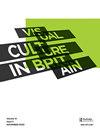Aubrey Beardsley: A Catalogue Raisonné by Linda Gertner Zatlin
Q2 Arts and Humanities
引用次数: 0
Abstract
Weighing just over fourteen pounds across its two five-hundred page volumes – containing over a thousand illustrations – Linda Gertner Zatlin’s catalogue raisonné of Aubrey Beardsley must count, by size if nothing else, as one of the most significant books on turn-of-thetwentieth-century British visual culture published in recent years. The catalogue raisonné is not an especially common form in the field of modern British art; two of Beardsley’s more illustrious contemporaries – Walter Sickert and William Nicholson – have only received partial catalogues, both significantly smaller (and lighter) than Zatlin’s study. Francis Bacon has, of course, also just received the full catalogue treatment, with Martin Harrison’s five-volume, thirty-six-pound set published in June 2016. Bacon, however, had a career lasting several decades; whereas Beardsley – who died at the age of twenty-five – had a career lasting several months. In fact, Zatlin spent almost as many years working on this book as Beardsley spent living. This all serves as a firm reminder of Beardsley’s continuing popularity on the international stage. Which other artists from this period – sometimes referred to as the ‘Beardsley period’ – would merit such a lavish publication? Zatlin’s book, which contains as many as fifty previously unpublished images, is a sumptuously produced affair, almost breathtaking in its beauty (due credit must go here to the designer, Emily Lees). One of Beardsley’s strengths has always been that, even in a poorly reproduced image, he still looks pretty good. Zatlin has made special effort, however, to gather up the best images available, re-photographing many examples, and giving them plenty of space within the page. The images are backed up with well-researched and gracefully written supporting texts, supplying the usual exhaustive information regarding exhibition, provenances and literature, followed by a summary of the work’s salient features, and how these have been critically received over the years. Some of these texts amount to little more than a few lines, while others (such as those on the images produced for Oscar Wilde’s Salomé) stretch over several pages. Each section – the book is ordered according to major projects, as opposed to a strictly chronological progression – is introduced by a short essay, which puts the project in the context of the artist’s career and, to a slightly lesser extent, the wider art world. Beardsley’s swift progression from Kate Greenaway imitator to Edward Burne-Jones acolyte, from canny appropriator of Mantegna, Whistler, Japanese prints and Rococo design to original Art Nouveau master and (arguably) Art Deco prophet, is charted in no small detail. Reoccurring motifs in his art are also well-covered, from Pierrot to the ghoulish foetus, with a particular emphasis on flower symbolism and, of course, the ubiquitous sexual imagery. The shortened nature of Beardsley’s life means that we can follow his development on what is almost a day-to-day level (though sadly, the lack of good records makes it hard to know exactly the days on which most of these artworks were《奥布里·比尔兹利:目录推理》,琳达·格特纳·扎特林著
琳达·格特纳·扎特林的《奥布里·比尔兹利作品集》共两册,五百多页,有一千多幅插图,重量只有14磅多一点。如果不考虑其他因素,从尺寸上看,这本书一定是近年来出版的关于20世纪初英国视觉文化的最重要的书之一。在英国现代艺术领域,目录拍卖并不是一种特别常见的形式;与比尔兹利同时代的两位更杰出的人——沃尔特·西克特和威廉·尼科尔森——只收到了部分目录,都比扎特林的研究小得多(也轻得多)。当然,弗朗西斯·培根也刚刚得到了完整的目录处理,马丁·哈里森于2016年6月出版了五卷本,36英镑的一套。然而,培根的职业生涯持续了几十年;而比尔兹利在25岁时去世,他的职业生涯持续了几个月。事实上,扎特林写这本书花的时间几乎和比尔兹利生活的时间一样长。这一切都是比尔兹利在国际舞台上持续受欢迎的坚定提醒。这一时期——有时被称为“比尔兹利时期”——还有哪些艺术家的作品值得如此慷慨地出版?扎特林的这本书包含了多达50张以前未发表的图片,是一本制作华丽的作品,其美几乎令人叹为观止(这要归功于设计师艾米丽·李斯)。比尔兹利的优点之一是,即使在一个拙劣的复制图像中,他看起来仍然很好。然而,Zatlin做出了特别的努力,收集了最好的图片,重新拍摄了许多例子,并在页面中给了它们足够的空间。这些图片都有经过充分研究和优雅书写的支持文本,提供了关于展览、出处和文献的通常详尽的信息,其次是对作品的突出特征的总结,以及这些年来这些特征是如何被批判性地接受的。其中一些文字不过几行字,而另一些(比如为奥斯卡·王尔德(Oscar Wilde)的《沙龙》(salom)制作的图片)则长达几页。本书的每一部分都是按照主要项目排序的,而不是严格按时间顺序排列的。每一部分都由一篇短文介绍,把这个项目放在艺术家职业生涯的背景下,在较小程度上,更广泛的艺术世界。比尔兹利从凯特·格林纳威(Kate Greenaway)的模仿者,到爱德华·伯恩-琼斯(Edward Burne-Jones)的助手,从精明的曼特尼亚(Mantegna)、惠斯勒(Whistler)、日本版画和洛可可(Rococo)设计的仿冒者,到原创新艺术运动大师和(可以说)装饰艺术的先知,他的快速成长过程记录了很多细节。在他的艺术中反复出现的主题也被很好地覆盖,从皮埃罗到可怕的胎儿,特别强调花的象征意义,当然,无处不在的性意象。比尔兹利生命的短暂意味着我们可以在几乎每天的水平上跟踪他的发展(尽管遗憾的是,缺乏良好的记录使得我们很难确切地知道这些艺术品的具体日期。
本文章由计算机程序翻译,如有差异,请以英文原文为准。
求助全文
约1分钟内获得全文
求助全文
来源期刊

Visual Culture in Britain
Arts and Humanities-Visual Arts and Performing Arts
CiteScore
0.60
自引率
0.00%
发文量
1
 求助内容:
求助内容: 应助结果提醒方式:
应助结果提醒方式:


